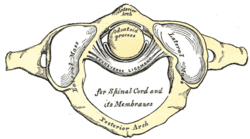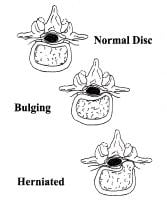
Chondromalacia Patellae
The patella, knee cap, is a thick circular-triangular bone which articulates with the femur and protects the anterior articular surface of the knee joint. It provides a bony surface that is able to withstand the compression placed on the quadriceps tendon during kneeling and friction that occurs during flexion and extention of the knee while running. It also provides additional leverage for the quadriceps in placing the tendon more anteriorly, farther from the joint’s axis, causing it to approach the tibia from a postion of greater mechanical advantage. The patella is the largest sesamoid bone in the human body.
Chondromalacia patellae is a knee problem that is symptomatic of marathon runners, basketball players, and power lifters. Chondromalacia is due to an irritation of the undersurface of the patella. The undersurface of the patella is covered with a layer of smooth cartilage and normally this cartilage glides smoothly across the knee during action. Some individuals, the patella tends to rub against one side of the knee joint and the cartilage surface becomes irritated and knee pain follows.
http://en.wikipedia.org/wiki/Chondromalacia_patellae
http://en.wikipedia.org/wiki/Chondromalacia_patellae
Great Saphenous Vein Graft
 Great saphenous vein is a large subcutaneous vein that spans the length of the thigh and leg. It is formed by the union of the drsal vein of the great toe and dorsal venous arch of the foot. The GSV ascends anterior to the medial malleolus, passes posterior to the medial condyle of the femur, anastomoses freely with the small saphenous vein, transverses the saphenous opening in the fascia lata, and empties into the femoral vein.
Great saphenous vein is a large subcutaneous vein that spans the length of the thigh and leg. It is formed by the union of the drsal vein of the great toe and dorsal venous arch of the foot. The GSV ascends anterior to the medial malleolus, passes posterior to the medial condyle of the femur, anastomoses freely with the small saphenous vein, transverses the saphenous opening in the fascia lata, and empties into the femoral vein. The GSV is sometimes used for coronary arterial bypasses because it is easily accessible, has usable lengths between perforating veins and tribuatries, and the walls of the GSV have a high percentage of muscular and elastic fibers compared to other superficial veins. Saphenous vein grafts are used to bypass obstructions in blood vessels, i.e. intracoronary thrombosis. Since veins have values, which aid in the transport of blood back to the heart, the saphenous vein must be inverted so the values don’t obstruct blood flow.
http://en.wikipedia.org/wiki/Great_saphenous_vein
Transplantation of Gracilis
 The gracilis is a long, strap-like muscle and is the most medial muscle of the thigh. It is part of the adductor group of muscles, and is the weakest and most superficial of the group. The gracilis muscle crosses the hip and knee joint; it joins two other joint muscles (sartorius and semitendinosus). These three muscles have a common distal attachment point, collectively known as the pes anserinus, into the superior part of the medial surface of the tibia. The gracilis’s proximal attachment point is the inferior pubic ramus below the symphysis.
The gracilis is a long, strap-like muscle and is the most medial muscle of the thigh. It is part of the adductor group of muscles, and is the weakest and most superficial of the group. The gracilis muscle crosses the hip and knee joint; it joins two other joint muscles (sartorius and semitendinosus). These three muscles have a common distal attachment point, collectively known as the pes anserinus, into the superior part of the medial surface of the tibia. The gracilis’s proximal attachment point is the inferior pubic ramus below the symphysis. The gracilis can be removed from the adductor group because of its weak contributions. The gracilis is often transplanted, or part of it, with nerves and blood vessels to replace damaged muscle in the hand. This process has produced good digital flexion and extension. The gracilis can also be dislocated from its distal attachment and repositioned to create a replacement for a nonfunctional external and sphincter.
http://en.wikipedia.org/wiki/Gracilis_muscle
http://en.wikipedia.org/wiki/Gracilis_muscle


